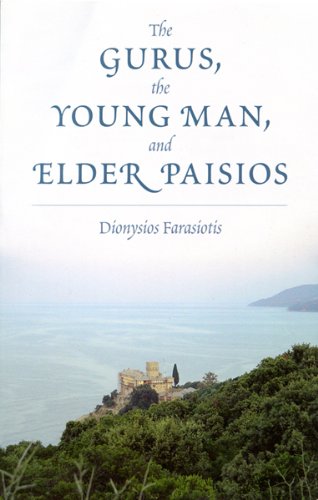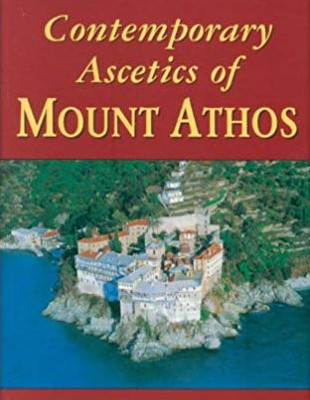PROPHET ELIAS BLESSING OF THE WATERS
Prophet Elias Greek Orthodox Church in Santa Cruz California invites ALL to
The Blessing of the Waters - Rio Del Mar Beach, Aptos
Saturday, January 11, 2020 - 11 am – Rain or shine
Luncheon is to follow at Prophet Elias Greek Orthodox Church,
223 Church Street, Santa Cruz, CA
(831) 429-6500 www.propheteliassc.org
Please call if you plan to dive for the cross.
2020 PARISH COUNCIL OATH THIS SUNDAY
Our new Parish Council will take the oath this Sunday so they can get to work immediately. The PC members for 2020 are: Thimi Saites, Brian Balcom, Jacob Voyce, Corkey Balcom, Mary Kanalakis, Kathy Shaw and David Zajicek. May the Lord God bless the Council and their work serving Christ!
STEWARDSHIP 2019
We are so humbled by the generosity of our 2019 Stewards. We had a Stewardship Budget Goal of $144,000. What was given? $144,227! We went from over $18,000 in the red just a month ago to now meeting our goal and beyond. It is such a joyful experience to see our parishioners respond with love and concern.
We thank all our blessed Stewards of 2019 who expressed their love for God, His Church and our parish with a commitment to support her. God bless you!
STEWARDSHIP 2020
We now have 32 families that have made pledges for their 2020 Stewardship. We praise your devotion to Saint John’s and are humbled by your quick response to ensure the continuation of our parish.
Thank you to:
Michael Bachik - Corkey & Brian Balcom - Rosina Barou - Father Ion Coman & family - Marie Cominos - Temia Demakopoulos - Olga Drumev - Georgia Filice - Chrisanthi Georgalos - Michael Georgariou -
Manal Haddad - Mike & Mary Kanalakis - Charles Leontis - Paul & Sasha McCrone - Timothy Mills -
Alexandra Mouzas - Stephanie Muntean - Fotis Papoulias - Spiro Politis - Elaine Rogers -
Euthimios Saites - Paraskevi Saites - Ann & Gus Scourkes - Kathleen & Steve Shaw -
Athanasios & Grete Vasby - Jacob Voyce & family - Jim & Angela Wagoner - Marc & Carrie Wilemon -
Jamie Wojtal - David & Nadia Zajicek - Anne Zavitsanos - Anthony & RaniaZavitsanos
Our new 2020 Budgeted Stewardship Goal is $152,000 and these families have already committed to 56% of that goal. But remember we are a family. We are ALL committed to helping our parish grow through our involvement, our giving, our time. Soon we will be refreshing our Mission and Vision. It is also time to refresh our Stewardship commitment and send in our pledges. Let us hear from YOU! God bless you for your generous love for your parish.
VISION AND MISSION REDEFINITION - ALL ON BOARD!
Our second Council of Ministries (COM-2) on January 19 is now expanding to encompass the whole community. All of Saint John's are kindly asked to participate in the group exercise to redefine our Vision and Mission for the next 3 years (the current ones date from 2016). This meeting will take place following the brief lunch after Liturgy. So let us come together to define our path ahead and what we see for our future as we strive to become a healthier parish.
BLESSING OF HOMES AFTER EPIPHANY
It is the tradition of the Church that during the days following Theophany we receive the visit of the priest at our homes for the short service of the blessing with Holy Water, to renew the presence of the Holy Spirit in our homes, in our families and to bring the Light in our lives. This is also a great opportunity to spend quality time with our priest, Father Ion.
Please contact Father Ion to set up a time for the blessing of your home and indicate the days and the time that would work for you the best. If you have children, plan to do the home blessing when they are present as well.
ORTHODOXY 101/ (RE)CATECHISM CLASS
The Catechism/ Orthodoxy 101 Class will continue on Sunday January 12 with topic #9 of the curriculum, Man, Sin, Salvation. The curriculum including audio resources can be found at our web site under Adult Education.
Our visitors and newcomers are encouraged to attend and participate. The class is also offered as RECATECHISM to all for their own benefit, for connecting with our visitors and catechumens and for strengthening our community. No asked questions are silly. Come, ask, learn, change and be transformed!
NEW: LEAVETAKING OF THEOPHANY CELEBRATION
The end of the period of observance of a feast in the Orthodox Church is called the leavetaking (apodosis). We will be ending the observance of Theophany on Tuesday, January 14, when we will celebrating the Liturgy. At the Leavetaking Matins we will again experience the glory of the revelation of the Holy Trinity through the magnificent hymns.
JANUARY LITURGY IN SALINAS
This month's liturgy in Salinas will take place on Friday, January 17, to celebrate Saint Anthony the Great.
CONGREGATIONAL CHANTING WORKSHOP
The Congregational Chanting Workshop will take place this week. The next class will be on Tuesday, January 21, from 10 am (before the Book Forum). Open to all.
BOOK FORUM

The book that we are reading and discussing together is The Gurus, the Young Man and Elder Paisios. Get your copy from our bookstore and start reading it. You will not be able to put it down... Our next class will be on January 14 when we will continue with Chapter 4.
This powerful memoir tells the story of a Greek youth who, out of a desire to know the truth empirically, began to experiment in yoga, hypnotism, and various occult techniques. Eventually drawn back to the Faith of his forefathers Orthodox Christianity he visited the ancient monastic republic of Mount Athos in his native Greece, where he was brought to a knowledge of the Truth of Jesus Christ by the saintly Elder Paisios (1924 1994). Nevertheless, believing he had only found part of the truth on the Holy Mountain, he chose to give the same opportunity to Hindu yogis that he had given to Elder Paisios and other Orthodox monks. Thus, at the age of twenty-five, he embarked on a trip to India, where he undertook his search in the ashrams of three famous gurus, one of whom was worshipped as a god. His experiences in India, along with his subsequent encounters with Elder Paisios on Mount Athos, are recounted in the present book in vivid detail. Popular in Greece since its first publication there in 2001, The Gurus, the Young Man, and Elder Paisios is a page-turning narrative of both outward adventures and inward struggles. What stands out most in this book, however, is the radiant image of Elder Paisios, possessed of divine gifts, laboring in prayer for his fellow man, and overflowing with unconditional love. Through this, one sees the uncreated Source of the elder's love and of the author's spiritual transformation: the true God-man Jesus Christ, Who honors man's personal freedom while drawing him, through love, into everlasting union with Himself.
CONTEMPORARY ASCETICS OF MOUNT ATHOS
 Our Wednesday evening service and dinner have been an excellent venue for building community, growing spiritually and learning the Orthodox faith. We are enjoying a new cycle for these presentations: Contemporary Ascetics of Mount Athos. We will learn about amazing elders from Mount Athos as presented by some of our own parishioners - many thanks to Athanasios and Greta who got us started. Join us for faith, community and the delicious lenten potluck dinner! Wednesdays evening right after the Paraklesis service.
Our Wednesday evening service and dinner have been an excellent venue for building community, growing spiritually and learning the Orthodox faith. We are enjoying a new cycle for these presentations: Contemporary Ascetics of Mount Athos. We will learn about amazing elders from Mount Athos as presented by some of our own parishioners - many thanks to Athanasios and Greta who got us started. Join us for faith, community and the delicious lenten potluck dinner! Wednesdays evening right after the Paraklesis service.
CUTTING OF THE VASILOPITA AND AUCTION
Family & Friends of Philoptochos
Once again Philoptochos invites the whole community to join us in this annual favorite
Cutting of the Vasilopita & Auction benefiting the St. Basils Academy
Sunday, February 2, after Divine Liturgy
This year’s Auctioneers are Philoptochos Associate Members
Thimi Saites & Paul McCrone
As you receive your piece of Vasilopita, please remember the children and give generously
May God be with us all, and especially the children in 2020!!
Read more about this beloved ministry of Philoptochos…
In 1944 Archbishop Athenagoras recommended that the Philoptochos society purchase the 250 acre estate in Garrison New York located on the shores of the Hudson river directly across from the United States military academy at West Point. With the establishment of the Academy of Saint Basil Philoptochos under took the lasting commitment to the children who reside there. Today Philoptochos remains the major financial supporter of the Academy through two of our ministry commitments Vasilopita and the sisterhood fund provides for the ongoing needs of the children of the Academy.
Traditionally, Ann Zavitsanos serves as our Vasilopita chair we are looking for at least 6 to 10 Vasiliopita to Auction. Ideally this will include Holyday bread from all of the various countries and ethnicities represented in our community. Let’s all be a part of this special day. If you or anyone you know in the community would like to bake and donate a pita please contact Ann (831-375-5549) or myself (619-518-2755 or alex@alexandramouzas.com).
SERVING THESE SUNDAYS
Serving this Sunday in church and at the fellowship hour following Liturgy:
January 12
Parish Council member: Euthimios Saites
Greeter: Temia Demakopoulos
Fellowship: Pink Team – Every 2nd Sunday
January 19
Parish Council member: Corkey Balcom
Greeter: Temia Demakopoulos
Fellowship: Orange Team – Every 3rd Sunday
CONFESSIONS AT SAINT JOHN’S
Father Ion is available to hear confessions after services and also by appointment at other times. If you need to do confession, please contact Father Ion ahead of time.
WALK FOR LIFE WEST COAST - SAN FRANCISCO
Please join Orthodox Christians from all over California on Saturday, January 25, 2020 at the Walk for Life West Coast in San Francisco! There will be a Pan-Orthodox Service at 11:30am in the Civic Center Plaza and the rally starts at 12:30pm. For more information go to www.walkforlifewc.com or call 510-882-7779. You may watch the promo video here.

